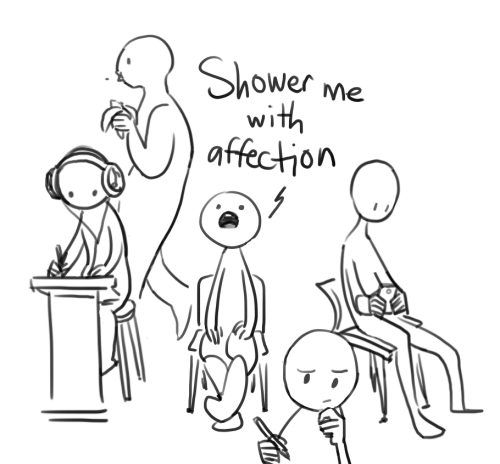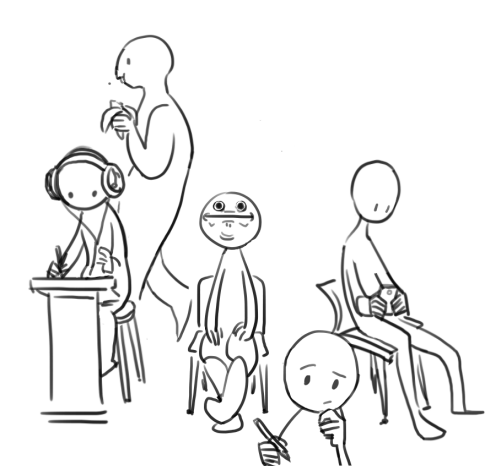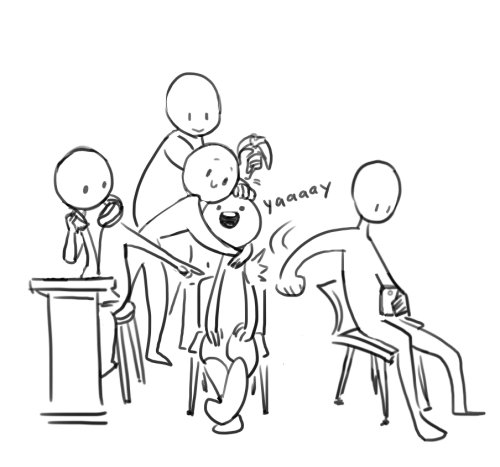I SAY TEMPOS THEY SAY TASCHENTUCH!! ;-; Same Right?
I SAY TEMPOS THEY SAY TASCHENTUCH!! ;-; same right?

(Submitted by anewkindofthrill)
More Posts from Narvember and Others
“You are worth finding. Worth knowing. Worth loving. You and all your one million layers. Always hold that close.”
— Danielle Doby

18~☆
And I became 18 years old , :D nothing changed but a number , I hope this year and the next years go well insha'allah , :)



livin’ the dream

I am congratulating myslef for reaching 3000 Words.. Do you see how happy I am having inly 1000 words left? I WILL BE FREE TO DRAW AS MUCH AS I CAN WITHOUT FEELING GUILTY! And also sleep and eat like an average human..without having to feel guilt..



You wanted a gift for Christmas??
There you go!!
Preview of the special that will be released with the new fan disc this 25 December
Okay so I'm having trouble with は and が and where to place them. I feel like it's a little random with wether to use は or が. Except for like the subject of a sentence... then its は I believe. Anyway. I'm also having trouble with に. Sometimes に is simple for me to understand because it'll be right after a specific location. Other times it's like 日本語の雑誌は先生の事務室にあります. And I'm just like.. How in the world is Japanese Magazines allowed in front of に?
Ok imma try. And sorry for the like 6 week delay. 😳 I’ve been through it the past 10 weeks.
First rule: Particles determine the role of each word relative to the verb.
が
As a Case Marker - defines the subject, or the person, or thing doing the action described by the relevant verb. The subject is always expressed as a noun phrase. It is different than は which defines the object. i.e subject of existence like “Over there is a store.” 店がある。
As a Conjuctive - it is used to connect two contrasting clauses like ‘but’ or ‘though.’
As subordinate clause connector - Indicates the subject of subordinate clause when it is different from the subject of the main clause. Indicates the subject of a relative clause.
Articles on は vs が
Wasabi Misa’s YouTube Tae Kim
Ok now I struggle with this so I hope this makes sense.
に
Indicates time or frequency
Indicates a location
Indicates the indirect object of a verb
Indicates the surface of a object where some action takes place
Indicates a point of arrival
Indicates an entering motion
Used together with a verb to express a purpose
Joins two or more nouns to indicate a list of items
Connects two or more items to indicate a matching or a contrast
Indicates the one acting or the one acted upon
Used with a verb to indicate a change or choice
Indicates a person who gives something or who provides a service
日本語の雑誌は先生の事務室にあります.
「日本語の雑誌」= Magazines of the Japanese Language or Japanese magazines
「先生の事務室」= Office of the teacher or teacher’s office
「あります」= to be located
「は」indicates the topic = magazines are the topic
「日本語の雑誌は」
「に」indicates a location = are located
The Japanese magazine’s are located in the teacher’s office.
Articles on に
Wasabi Quora Tae Kim Misa’s Youtube
the purest form of love, i think, is having someone who wants to learn about you, from you, and with you.

The first of hopefully more posts targeting some of my most popular questions. This one is to answer all the asks I receive about my own personal (and general) study tips. Hope you all like!
Complication - ROOKiEZ is PUNK’D
Anime: Durarara!!
-
 superbettycool96 liked this · 4 years ago
superbettycool96 liked this · 4 years ago -
 destana-min reblogged this · 5 years ago
destana-min reblogged this · 5 years ago -
 justmeandmyfuckeduplife liked this · 6 years ago
justmeandmyfuckeduplife liked this · 6 years ago -
 toomanyfandoms008 liked this · 7 years ago
toomanyfandoms008 liked this · 7 years ago -
 haaveillaalien liked this · 7 years ago
haaveillaalien liked this · 7 years ago -
 inmycolorfulforest liked this · 8 years ago
inmycolorfulforest liked this · 8 years ago -
 non-of-your-businezzzz liked this · 8 years ago
non-of-your-businezzzz liked this · 8 years ago -
 sunat2508 liked this · 8 years ago
sunat2508 liked this · 8 years ago -
 mimi4mars liked this · 8 years ago
mimi4mars liked this · 8 years ago -
 thiswhitecloud liked this · 9 years ago
thiswhitecloud liked this · 9 years ago -
 arzyale liked this · 9 years ago
arzyale liked this · 9 years ago -
 xoluox-blog liked this · 9 years ago
xoluox-blog liked this · 9 years ago -
 pakahduksenkyyneleet liked this · 9 years ago
pakahduksenkyyneleet liked this · 9 years ago -
 neonflashincamphalfblood liked this · 10 years ago
neonflashincamphalfblood liked this · 10 years ago -
 idol-kindergarden liked this · 10 years ago
idol-kindergarden liked this · 10 years ago -
 kleineschublade-vollerschok-blog reblogged this · 10 years ago
kleineschublade-vollerschok-blog reblogged this · 10 years ago -
 xbeautyxlifex liked this · 10 years ago
xbeautyxlifex liked this · 10 years ago -
 rosswag98-blog liked this · 10 years ago
rosswag98-blog liked this · 10 years ago -
 mekachanics liked this · 10 years ago
mekachanics liked this · 10 years ago -
 genderjester liked this · 10 years ago
genderjester liked this · 10 years ago -
 megz- liked this · 10 years ago
megz- liked this · 10 years ago -
 hawyeed liked this · 10 years ago
hawyeed liked this · 10 years ago -
 young-and-young liked this · 10 years ago
young-and-young liked this · 10 years ago -
 niemals-nie-11 liked this · 10 years ago
niemals-nie-11 liked this · 10 years ago -
 buried-moons liked this · 10 years ago
buried-moons liked this · 10 years ago -
 241km liked this · 10 years ago
241km liked this · 10 years ago -
 narvember reblogged this · 10 years ago
narvember reblogged this · 10 years ago -
 narvember liked this · 10 years ago
narvember liked this · 10 years ago -
 bahnhofsblumen liked this · 10 years ago
bahnhofsblumen liked this · 10 years ago -
 wipfelrauschen-blog liked this · 11 years ago
wipfelrauschen-blog liked this · 11 years ago -
 papierfliegerchen liked this · 11 years ago
papierfliegerchen liked this · 11 years ago -
 feldkommandant reblogged this · 11 years ago
feldkommandant reblogged this · 11 years ago -
 gladysxoxoxo-blog liked this · 11 years ago
gladysxoxoxo-blog liked this · 11 years ago -
 astudyinrcknroll liked this · 11 years ago
astudyinrcknroll liked this · 11 years ago -
 confusedblueeyes liked this · 11 years ago
confusedblueeyes liked this · 11 years ago -
 berrizcombo liked this · 12 years ago
berrizcombo liked this · 12 years ago -
 germanlanguagerocks reblogged this · 12 years ago
germanlanguagerocks reblogged this · 12 years ago